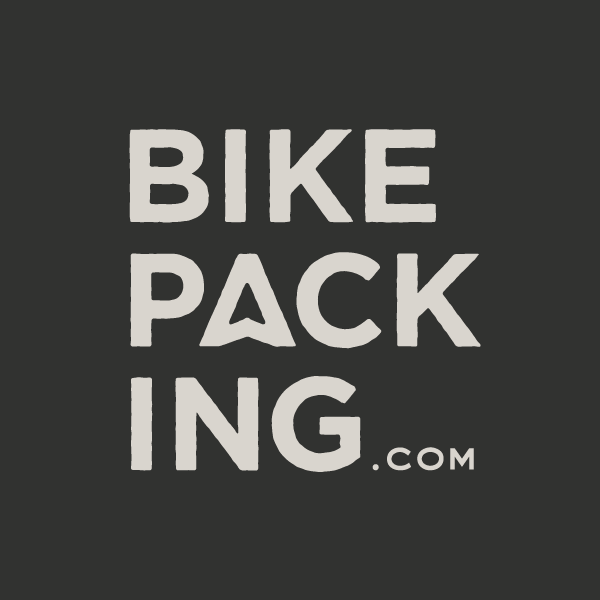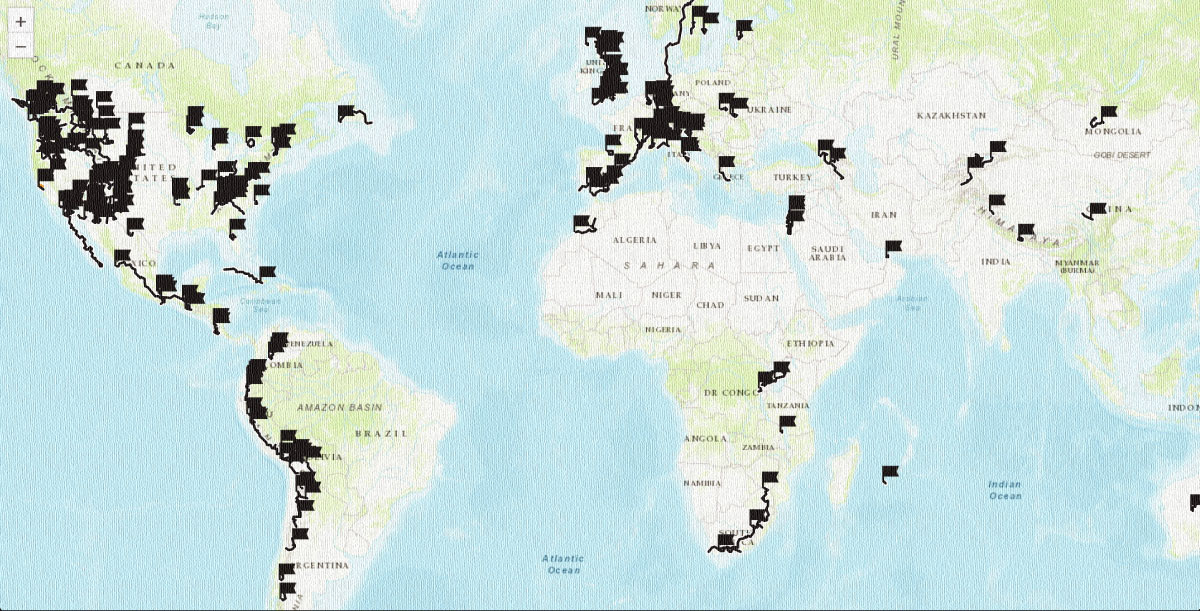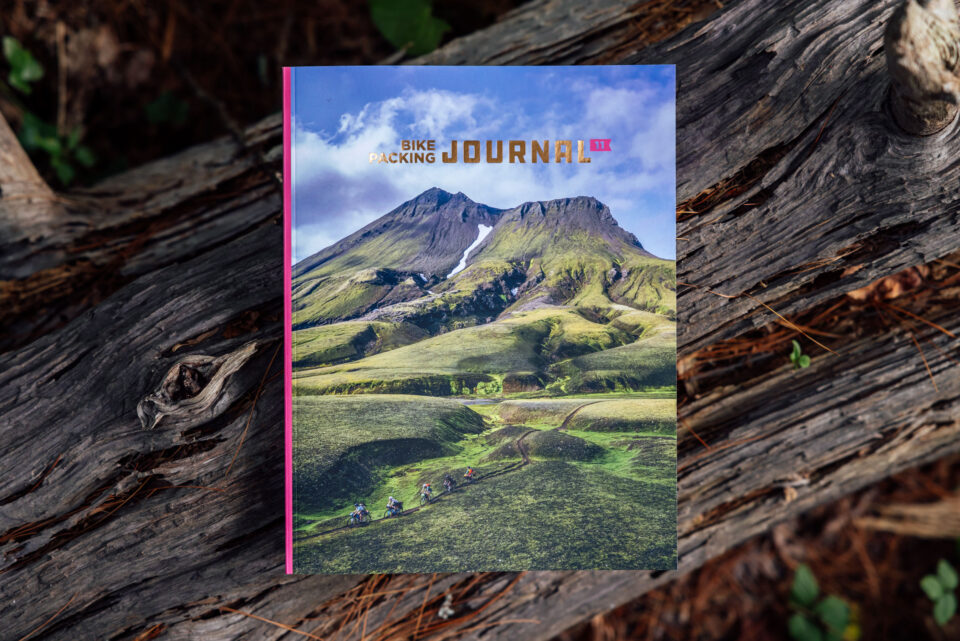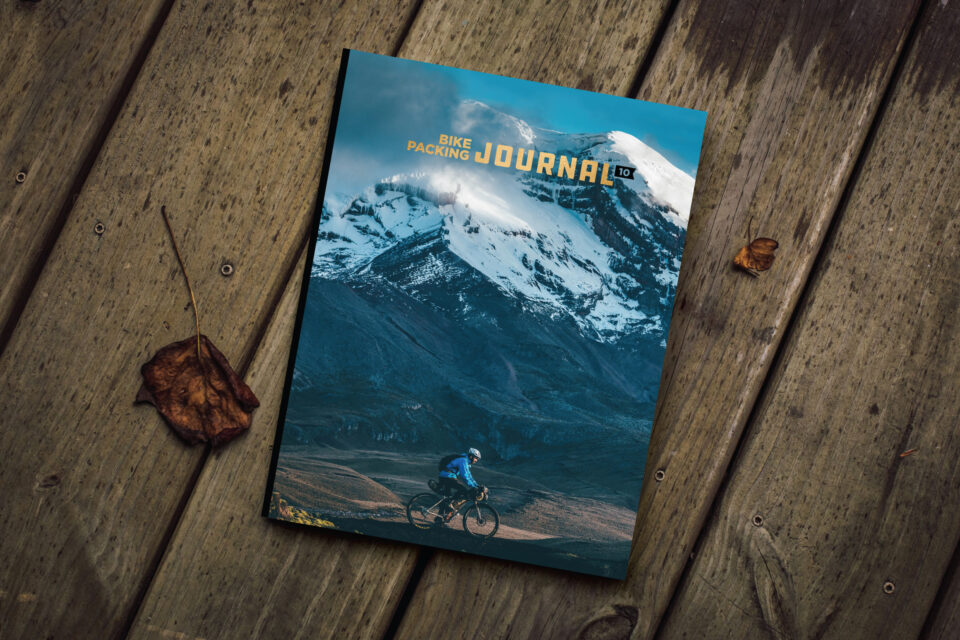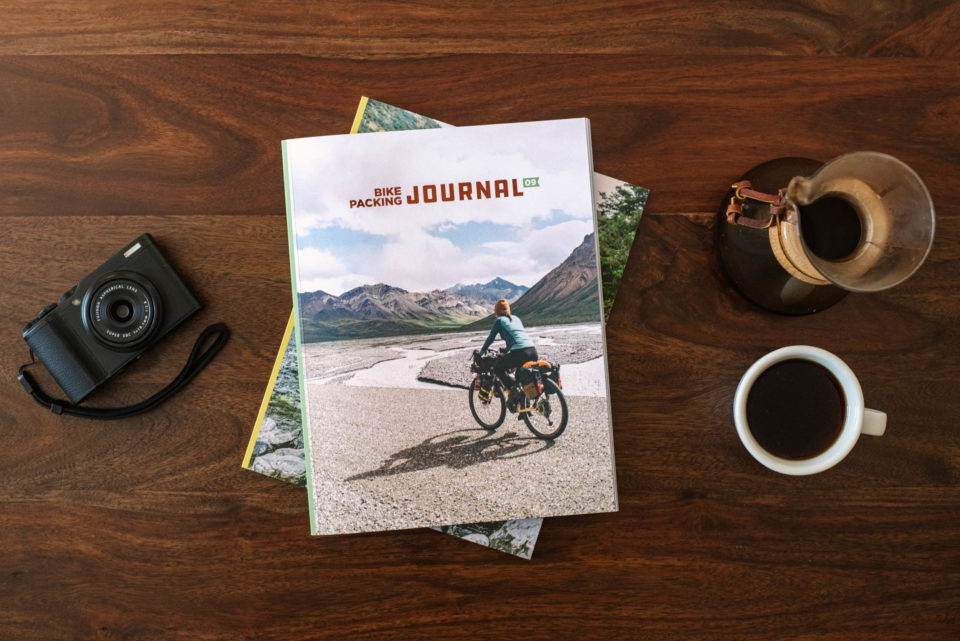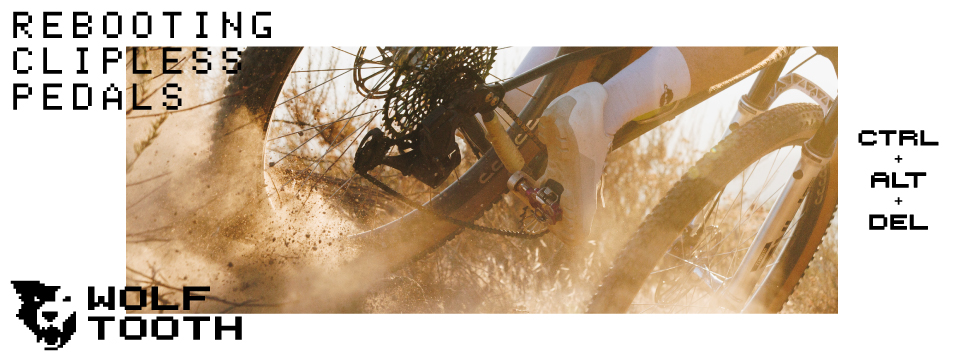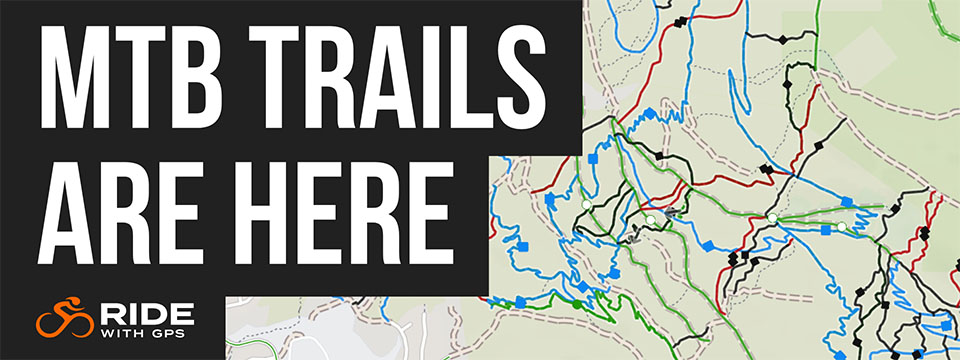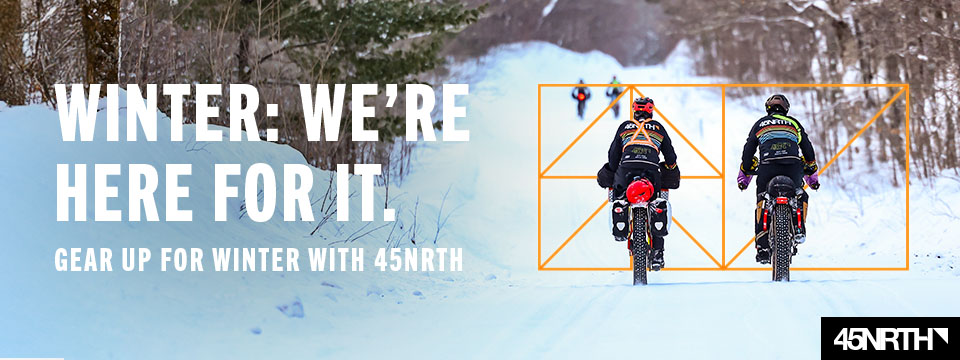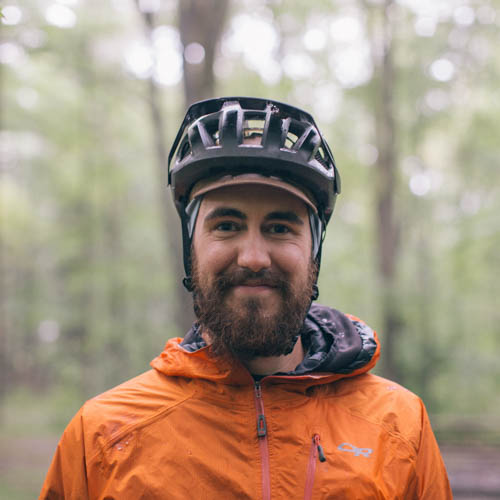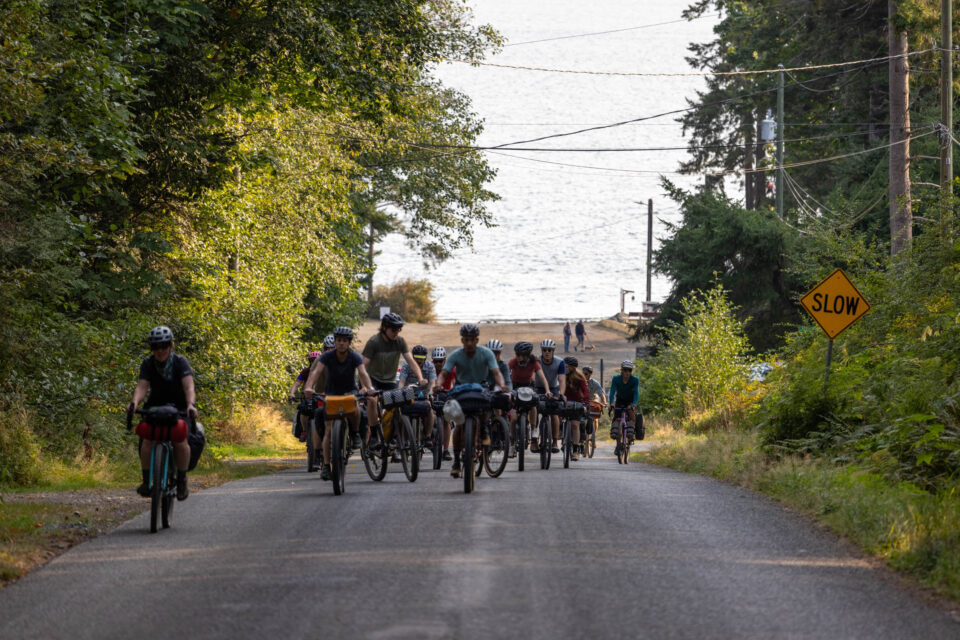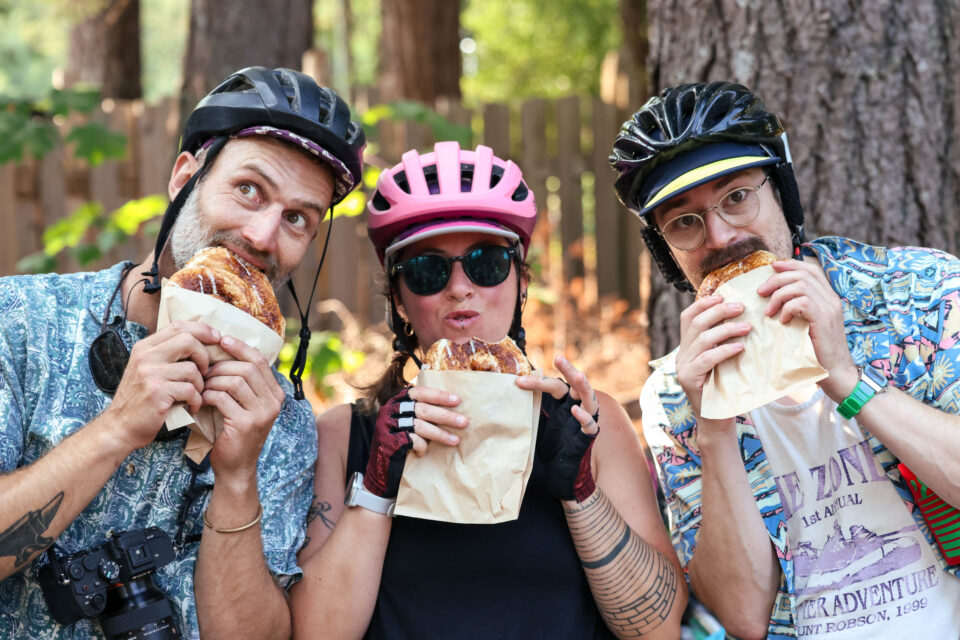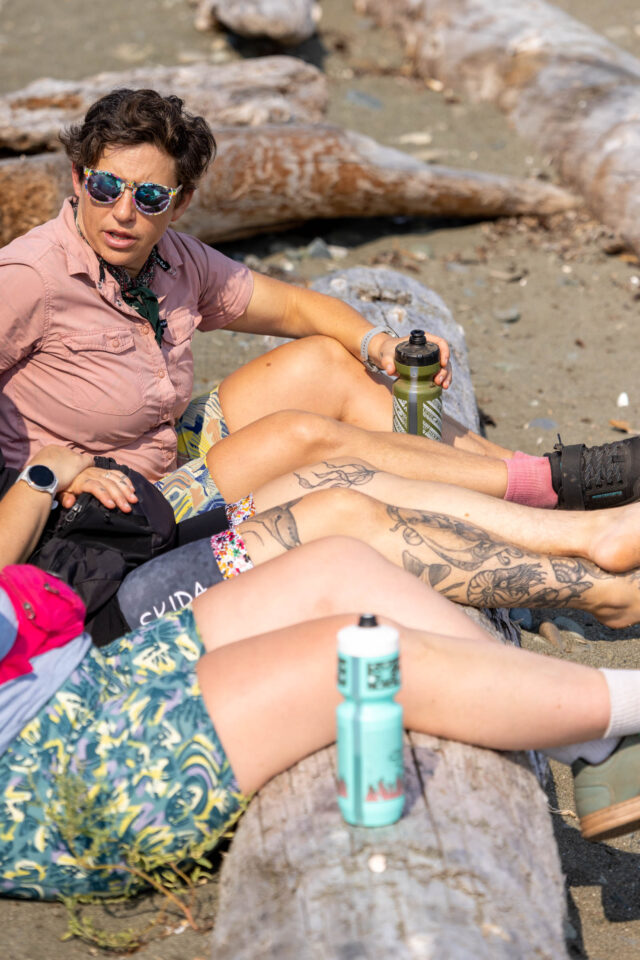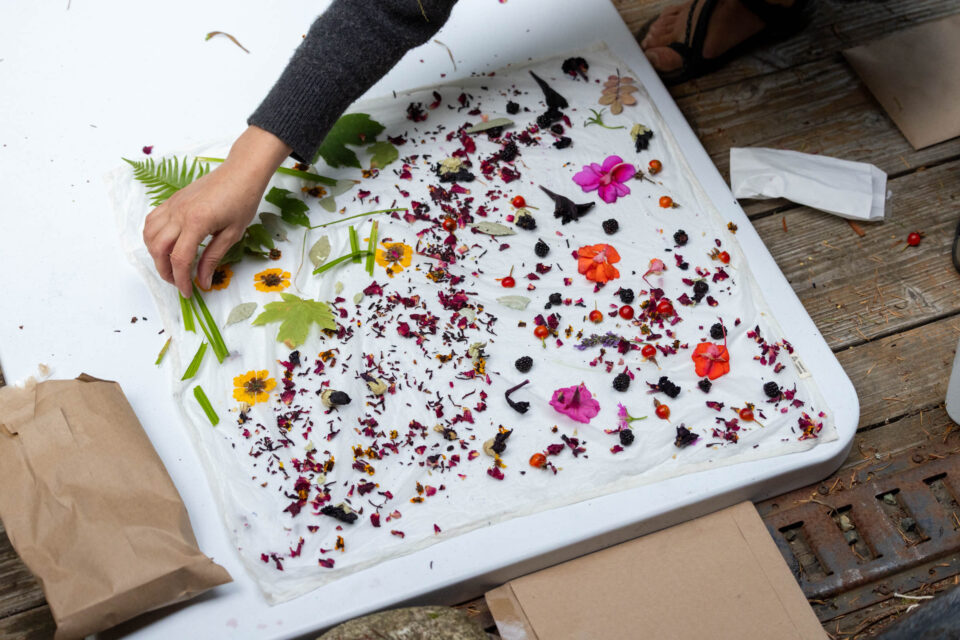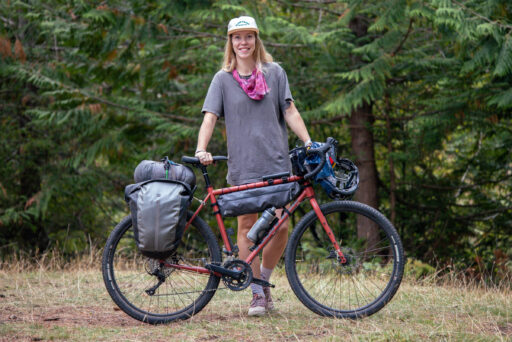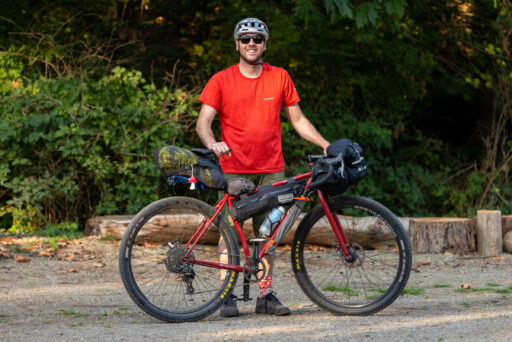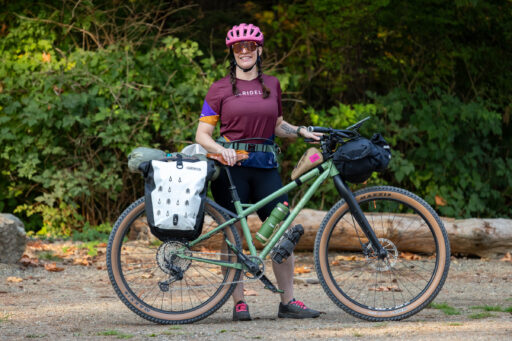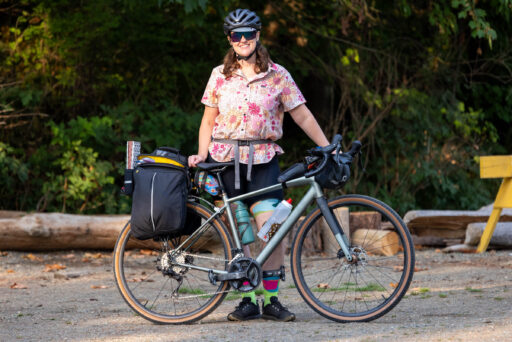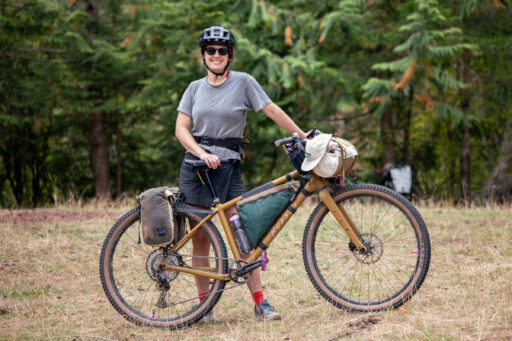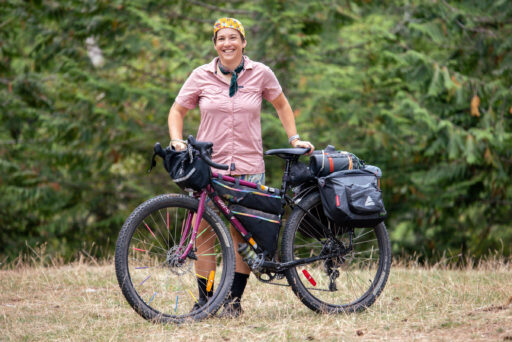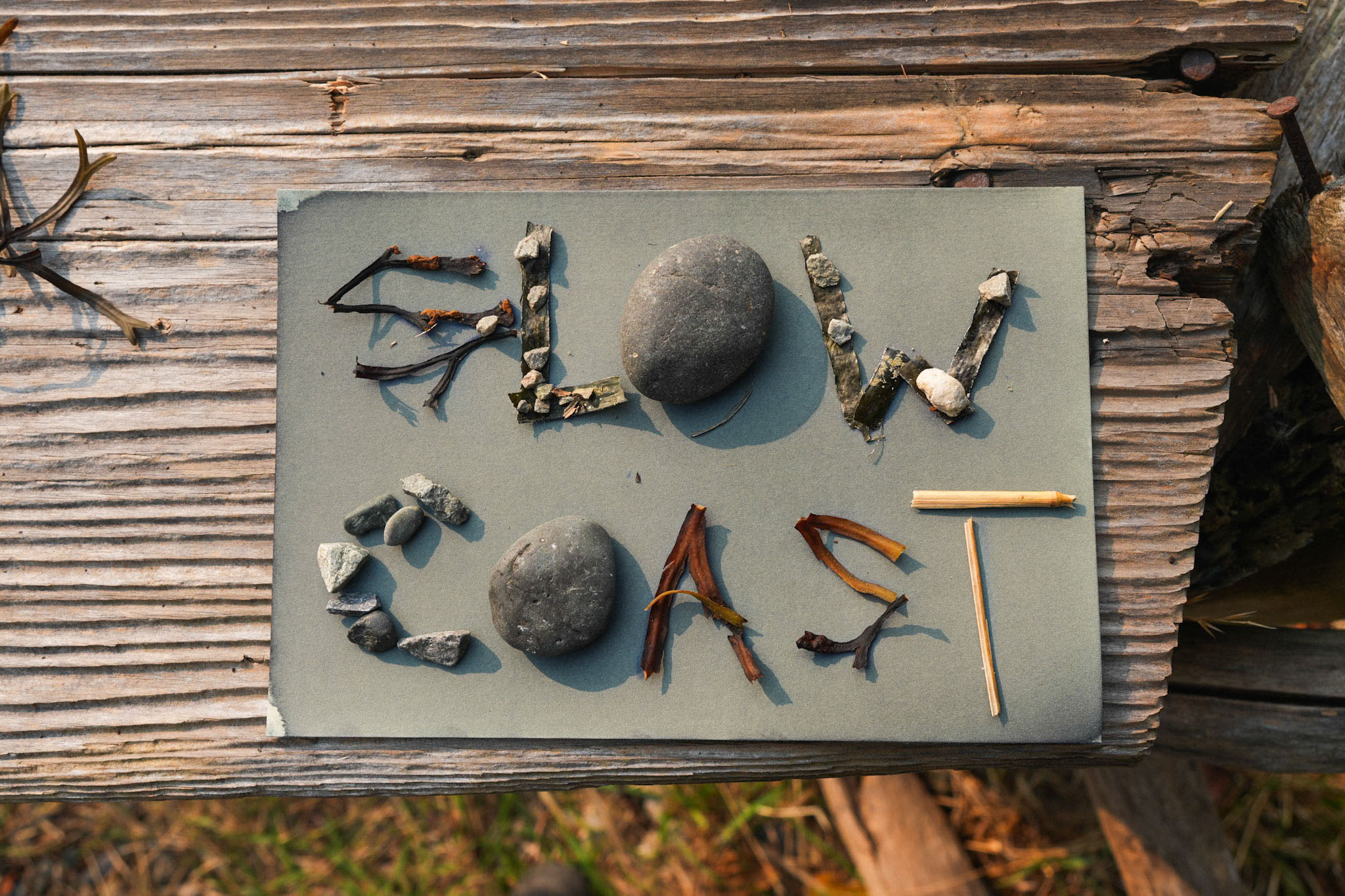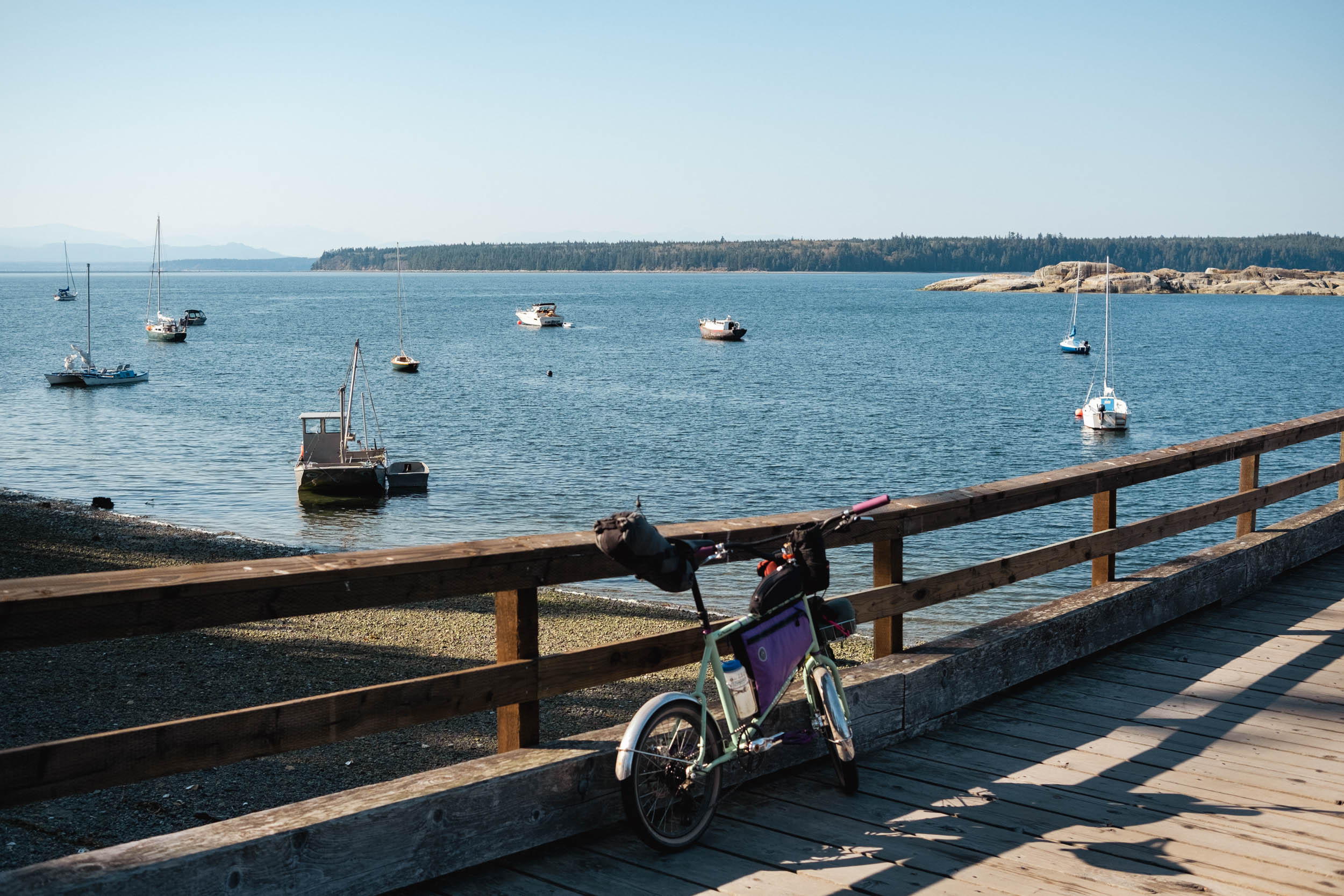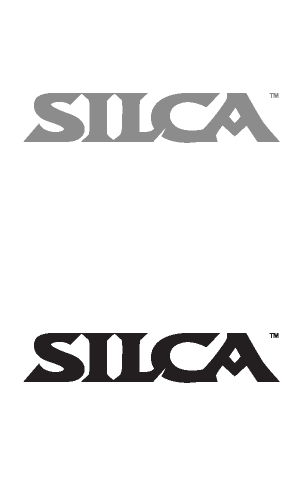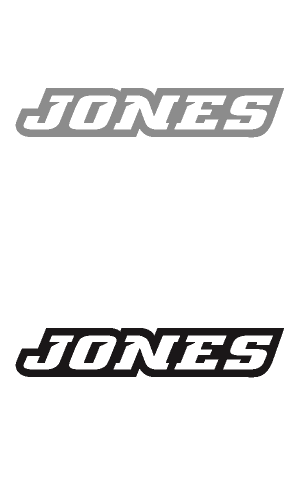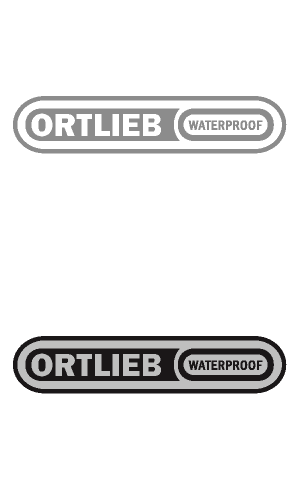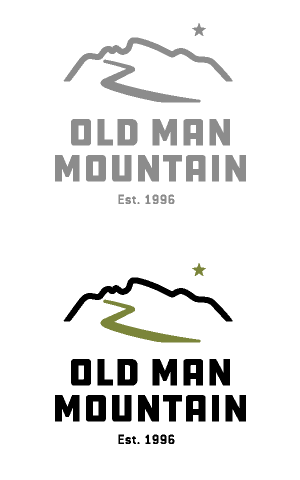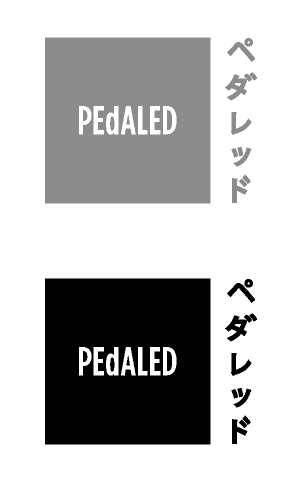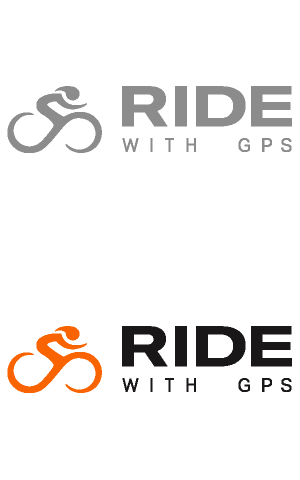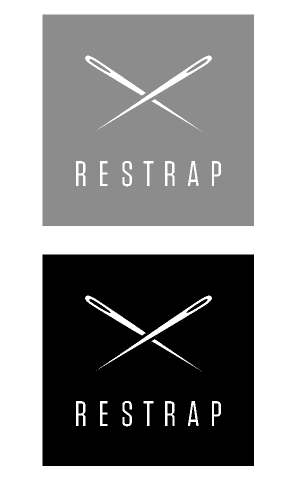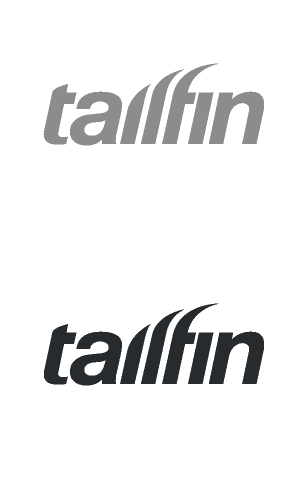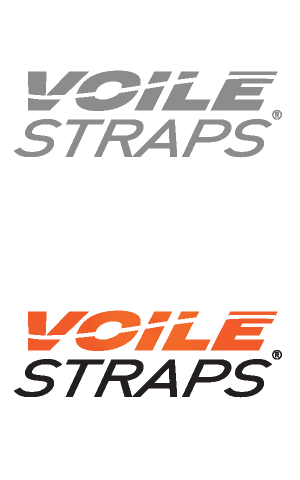Slow Coast 2025: Reflecting on the Best Weekend of Summer
The second annual Slow Coast event brought together 50 riders for a fun-filled bikepacking weekender linking the Sunshine Coast, Vancouver Island, and the Discovery Islands. After some pondering, Miles wonders where the event fits between a group bikepacking ride and a guided trip and whether it should be considered bikepacking at all. Find his reflection centered around these questions with photos here…
PUBLISHED Oct 20, 2025
As my partner Emily puts it, “Slow Coast was born out of a desire to create a space for more intentional bike travel, with less emphasis on speed and mileage, and more focus on the moments in between.” Slow Coast kicked off last year with a weekend bikepacking event in the qathet Regional District. The goal was to mix non-competitive bikepacking with opportunities for education, community building, and creative play. That year, 40 of us rode the Texada Ridge Runner route, swam together in Bob’s Lake, and devoured burritos. A portion of everyone’s entry fee was donated to local advocacy groups. Although Slow Coast is Emily’s baby, I’ve been along for the ride.
When Emily and I decided to bring a bikepacking event centered around intention and advocacy to British Columbia’s Sunshine Coast, we had a few non-negotiables. First, we wanted the pace to feel slow and intentional, rather than hurried. Secondly, we didn’t want the focus of the weekend to be solely on riding bikes. Instead, we decided to incorporate swim stops, art, snack breaks, a group meal, and leisurely moments at camp to create a more welcoming atmosphere. We also wanted to incorporate education into the weekend in some form, whether that’s a presentation about a local project or non-profit, or doing something hands-on during the ride. It’s so common for adults to travel to new places without taking the time to actually learn about them. We’re not experts and will always have a lot to learn, so it was essential to incorporate this into the event.
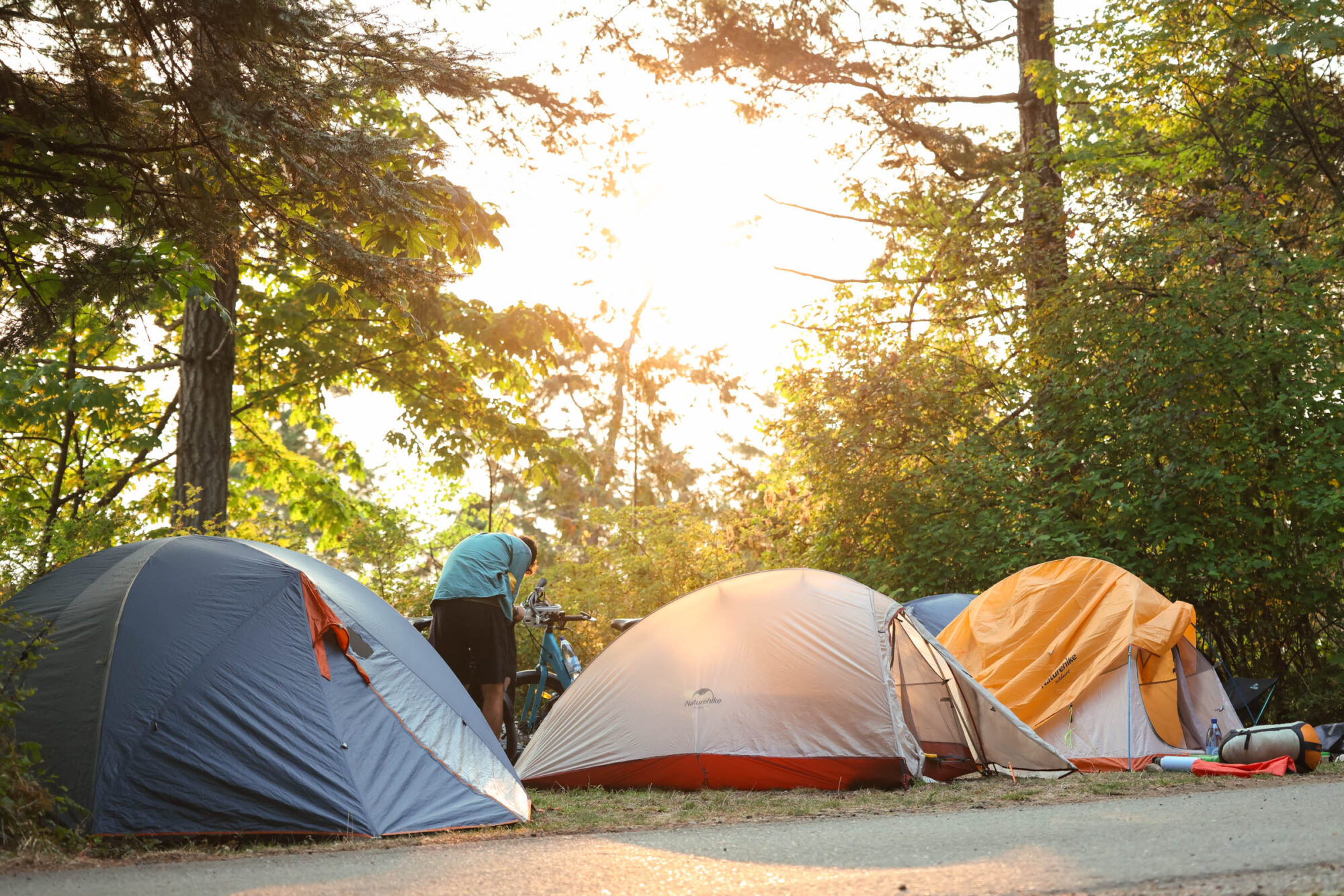
We aimed to create a supportive bikepacking experience that would challenge participants, set them up for success, and foster a sense of independence in their accomplishments. We don’t market Slow Coast as an introduction to bikepacking, nor do we necessarily recommend it for first-timers, mainly because our routes are a bit longer. We provide as much information as possible and offer a realistic level of support, so individuals can decide if the event is right for them. We’ve had first-time bikepackers attend, and ultra-endurance cyclist Meaghan Hackinen came out for our first year. The spread is just part of what makes the weekend so enjoyable.
Providing a realistic level of support meant providing a well-scouted route, having a vehicle on hand in case of emergencies, providing one home-cooked meal during the weekend, and creating an encouraging atmosphere where the group can hopefully lift each other up. To achieve this, we charged a modest entry fee based on what we’d expect to get from a paid bikepacking experience.
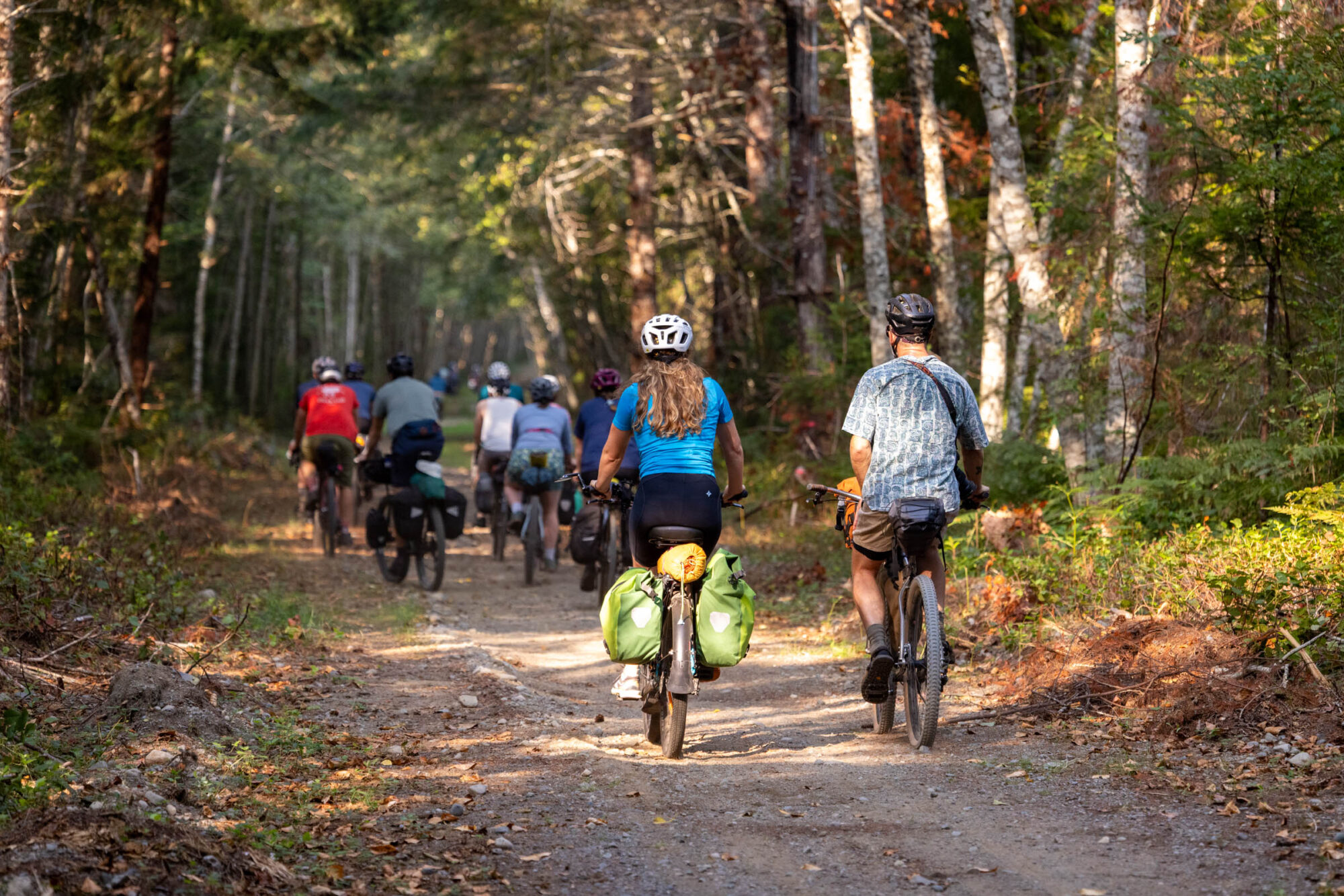
Neither of us was interested in leading a group of riders around each corner and making decisions for every participant. We also didn’t want the entry fee to be out of reach for people, so we provided as much as we could for as little as we could charge. After covering the expenses for food, ferries, and donations to local advocacy groups, we don’t take home any money. It’s neither an introduction to bikepacking nor a guided bikepacking trip. We see it as a community bikepacking weekend… but reflecting on our second event, which just wrapped up last month, it felt more like a guided bikepacking at times.
Reflecting on my experience and my role over the weekend, I can’t help but ask myself: Is this really bikepacking? Does it matter?
The Kleenex Effect
My interpretation of what bikepacking is, or more specifically, what most of my bikepacking trips look like, is starting to feel different than what the new wave of bikepackers would describe. I can’t count the number of times a new social media influencer pops up on my feed, walking us through a “weekend bikepacking trip on the Sunshine Coast,” just to ride the paved highway from one ferry terminal to a provincial park or Airbnb. I hate feeling like a gatekeeper, but is that really bikepacking? Does it really matter if everyone’s definition of what bikepacking is and isn’t aligns?
The fact is, for many people, bikepacking has very little to do with the surfaces ridden and more to do with the way people pack their gear. “Bikepacking” seems to be replacing “cycle touring” as a term, likely because more people are sharing bikepacking routes and bags, and there’s less chatter online about paved cycle touring routes. I don’t think this is a bad thing, and it seems natural for everyone to have their own interpretation of what bikepacking is, but it’s impossible to ignore how the collective understanding of bikepacking begins to affect people’s experience riding the routes we publish and the events that are popping up all over the place.

For example, not too long ago, I saw an introduction to bikepacking event pop up here in British Columbia, and one of the rules was that attendees should ride a gravel bike. “Mountain bikes” weren’t allowed. As someone who lives on the coast, I can’t fathom why mountain bikes wouldn’t be recommended for any style of bikepacking trip, unless it was truly a road ride. For nearly every bikepacking route I’ve scouted in British Columbia, I’ve ridden some form of a mountain bike, either rigid or a hardtail, and 9 times out of 10, I would take one of those over a gravel bike. Perhaps it’s a matter of personal preference, but bikepacking may be slowly losing its identity.
Riding Slow, Thinking Too Much
I didn’t expect this year’s Slow Coast route to have such a significant impact on the overall experience. We followed a three-day loop from Powell River, taking a ferry to Vancouver Island, camping not far from the ferry terminal. From there, we pedaled north to Campbell River and then took another ferry to Quadra Island for our second night. The next morning, we caught our third ferry to Cortes Island, followed by a private boat charter that connected us back to the Sunshine Coast. The final stretch of our weekend was a road ride between Lund and Powell River.

Emily and I have ridden this route in various ways. We thought it would be a fun way for people to connect several islands in a way that’s logistically a little complicated and inherently quite expensive to do on your own. The route we took to connect everything utilized parts of the Tree to Sea Loop and ended up standing out as some of the most interesting riding, with all the various pathways and trails that linked together to avoid the busy highway. I really like that style of riding. There was some real work involved in making the connections that would have been hard to find without knowing the area or putting in some effort. The way the route cut through a parking lot of a strip mall, linking up perfectly with a crosswalk to cross a busy street and reach the ferry terminal in Campbell River, for example, didn’t happen by chance. A well-designed route with a sense of flow is just one of the perks of paying for a group bikepacking trip.
Despite its complex nature, the weekend went off without a hitch. Spirits were high, the weather was perfect, and unlike the first year, we were often riding together as a massive group because there wasn’t much elevation gain during the first two days. Emily pours so much energy into the event, and it shows. It really came together on our second night, during the provided dinner, with nearly 50 folk sitting at a long table under a gazebo at our campground. Some people attended the inaugural event, but there were many new faces. It still felt like a mix between a summer camp for kids and a family reunion. We stopped at oceanside beaches to gather flora to dye bandanas, devoured cinnamon buns, and embraced a slower pace and opportunities to learn.
After the weekend was over, Emily and I reflected on the event and how it differed from the first year. Last year, we followed the Texada Ridge Runner route, which follows a 50/50 split of gravel and pavement. It feels more remote and less urban, and because of that, it feels more like what I would define as bikepacking. This year’s route was more urban, featuring more pavement and a higher concentration of people and vehicles. Looking at the route itself, I’m not sure I would describe it as bikepacking. For whatever reason, this year’s event felt even more luxurious compared to last year’s. We had cold drinks and snacks at camp both nights. We let the attendees stash their food bags in the van overnight to avoid a bunch of bear hangs, and Emily and I spent most of the second evening cleaning up after dinner instead of enjoying the company of new friends.
In those moments, it truly felt like a fully catered bikepacking trip, which isn’t really what we intended. I don’t blame the attendees, however. We did this to ourselves by bringing the van, carrying garbage bags for people’s trash, and prioritizing a positive experience for everyone rather than divvying up camp chores and responsibilities. Emily and I agree that we love to spoil the attendees, and all the little things make the weekend feel extra special—but at what cost? Once you start providing these comforts, it’s hard to draw the line. I do this dozens of times every year, and it’s my job, so is it fair to expect everyone to know how to use RWGPS or own a GPS device? Probably not.

I had to catch myself when I started thinking this way, because ultimately, people sign up for Slow Coast to have a fun weekend on bikes with friends. It’s about the camaraderie, the swims, the snacks, the people, and less about the route itself. I ran this by a couple of people who attended both last year’s and this year’s event, and they echoed these suspicions. To them, it was more about the opportunity to meet and spend time with friendly people who aren’t too hardcore, ride together, and the feeling of an event that is “organized, but not too organized,” as Colin put it.
Dirt Intensions
These days, ultra-endurance racing and bikepacking have been lumped together, which has a greater impact on the global perception of what is and isn’t. I’ve stumbled on a couple Youtube videos about the “realities of bikepacking” and how it’s not as care-free and joyful as it’s made out to be. That’s bullshit. Even if we look at the origin of the term bikepacking, no one has once said it has to be hard. On the other hand, I’ve heard firsthand that the ultra-endurance racing scene has tainted the term bikepacking by focusing on the “fast is best” side of the sport. The fact is, competition, records, and winners receive a great deal of attention and have a significant impact on the cycling industry as a whole. As the most prominent bikepacking resource on the web, maybe we’re partly to blame.
In Joe Cruz’s History of Bikepacking, Logan Watts, founder of BIKEPACKING.com, defined bikepacking as “having a dirt intention on a bicycle.” The specific mindset of riding off-pavement is the goal, not traveling from town to town, as cycle tourists often set out to do. With this definition in mind, Slow Coast was probably bikepacking after all. The route I created weaved in as much off-road riding as possible with the goal of reaching places not usually linked together by bike. We didn’t set out to ride pavement, but sometimes it’s the only option.
What Is Bikepacking?
Emily: When I went on my first overnight bike trip with Miles in 2018, we rode primarily on pavement on Salt Spring Island to camp oceanside at Ruckle Provincial Park. I was barely riding at the time, the route was hillier than I anticipated, and Miles had forgotten to pack our dinner and breakfast. Needless to say, I didn’t love the experience. Though it was mostly a paved route, it was both physically and mentally challenging for me, and I wasn’t sold on the whole “bikepacking” concept, even if it didn’t quite meet the term’s definition of what bikepacking is. I started to equate bikepacking with being uncomfortable, not sleeping well, and being hungry. No, thank you.

After a few years of discovering my own joy in riding a bike, I’ve slowly begun to redefine what bikepacking means to me. For me, it has been a way to see places that I wouldn’t be able to drive to and cover distances I wouldn’t want to walk. Some terrain might be accessible by a truck or off-road vehicle, but I don’t have those, so the bike is my next best option. I’ve been lucky enough to ride in and camp in some beautiful spots that I never would have experienced if it weren’t for my bike. My body has gotten stronger over the years, and I’ve learned I can do harder things than I thought I was capable of, but it has never been about the riding, necessarily. The riding is a means to an end.
I’ve come to savor the endless sweet snacks, fresh water dips, and the joy of a good book in the tent. I still barely sleep, but I’ve come to learn I can bike quite far on no sleep.

Miles: I don’t think it’s bad to differentiate on-road touring from off-road touring. Even if packing styles and techniques have evolved to the point where they seem to have come full circle, I still think it’s fair to categorize primarily off-road touring, especially routes that work in rough doubletrack, ATV tracks, and singletrack, as something different from traditional road-touring routes. The term and its usage are evolving. There are still plenty of people who prefer to say bike touring, bike camping, or whatever else sounds fitting, and that’s alright by me. In any case, bikepacking has gained popularity, and it is here to stay.
Reflecting on Slow Coast, the differentiation is even less important. From speaking to the folks who paid to be there, it’s more about the community and way less about the style of riding or how we define the terrain. It’s a good reminder for me that it’s the people who make helping out with events like these and working for this website so rewarding. In the end, we’re all just riding bikes.
Riders and Rigs of Slow Coast 2025
It turns out I wasn’t left with much time to capture rider portraits during the weekend, but I managed to get a good chunk of the attendees in between riding and camp hangouts. Scroll through to see everyone’s setups.
Slow Coast 2025 Route
The route we followed included a small section of private property near Carrington Bay on Cortes Island, so I’ve adjusted it to create a public version for anyone interested in riding the route. It’s a fun and fairly relaxed loop, but it does require setting up a private boat charter between Cortes and Lund. The most affordable option is to find a water taxi that already has a run planned either to Cortes or the Sunshine Coast Trail, and join in on that.
A special thank you goes out to Experience Comox Valley, Dismount Bike Shop, Mica Cycles, Fauna Components, Butter Snakes Trading Co., Melissa Dow, NOCS Provisions, 32 Lakes Coffee Roasters, Townsite Brewing, Prism Kits, Forest Wellness, Closet de Kiki, Meaghan Hackinen, Spurcycle, and the Qathet Regional Cycling Association for supporting this year’s event. This year, Sarah Hornby organized and led us through a natural dying workshop, which was a hit with the attendees. Thank you for making art on bikes a Slow Coast tradition. Ali and Amanda drove our support vehicle, which was packed to the brim with burritos, drinks, and snacks!
You can learn more about Slow Coast via Instagram or by visiting SlowCoast.ca.
Further Reading
Make sure to dig into these related articles for more info...
Please keep the conversation civil, constructive, and inclusive, or your comment will be removed.
